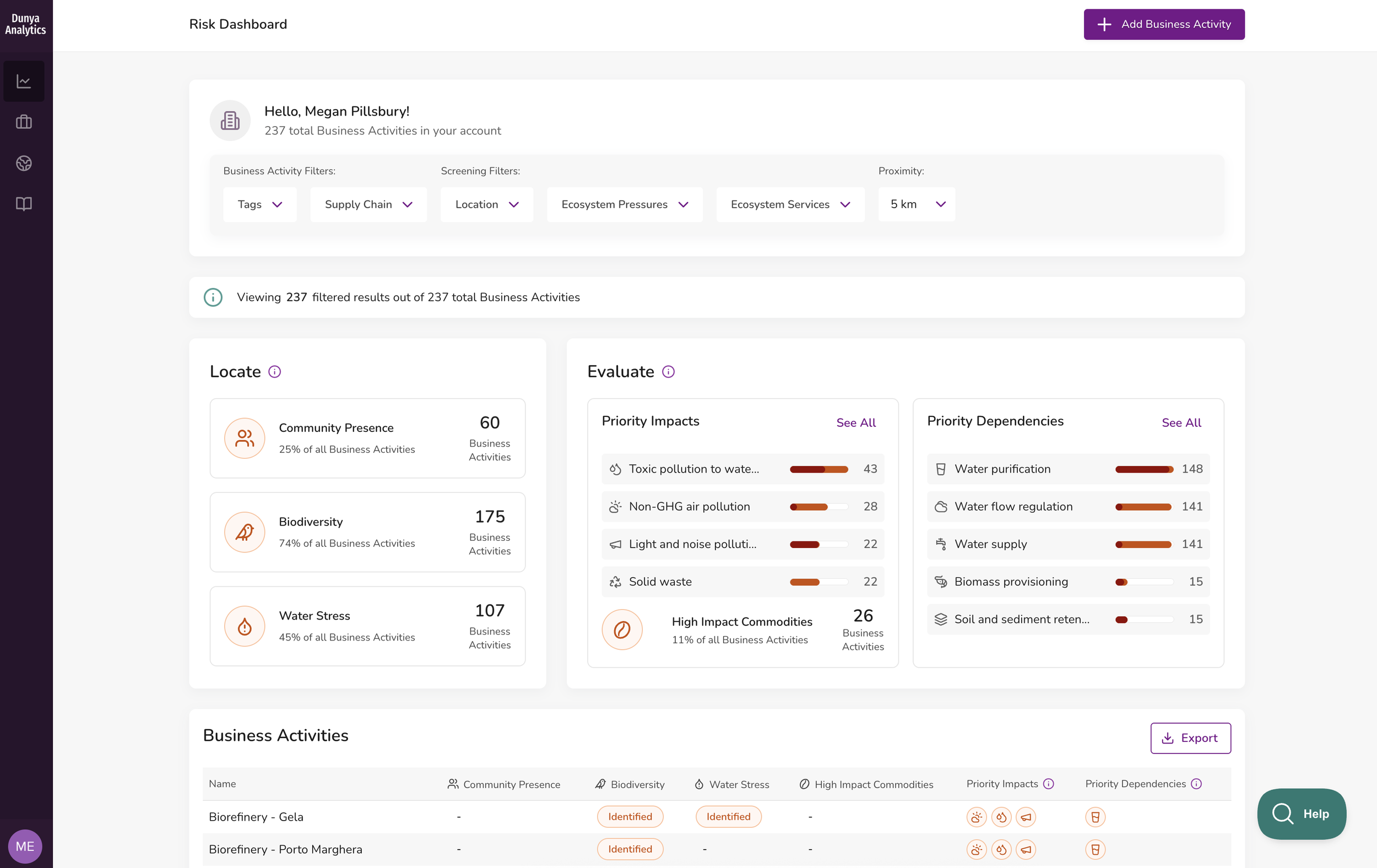
Turn nature complexity
into business clarity
How it works
Step 1. Map Your Nature Footprint
Easily upload locations, suppliers, or portfolios. Understand your interactions with critical ecosystems and natural resources globally.
Step 3. Accelerate Your Transition
Implement your sustainability strategy seamlessly, track progress, and report confidently with intuitive dashboards.
Step 2. Generate Strategic Insights
Advanced analytics pinpoint operational risks and highlight where regenerative practices create business efficiencies and financial opportunities.
Step 4. Share Your Progress
Generate disclosure-ready reports aligned with TNFD, CSRD, and other global frameworks. Demonstrate your nature-positive journey to stakeholders with confidence.
Not sure where to start?
Download our free guide for measuring, managing, and reporting nature risk, in five actionable steps.
TNFD (The Taskforce for Nature-related Financial Disclosure)
The TNFD has developed disclosure recommendations and guidance to help businesses and finance assess, report and act on their nature-related dependencies, impacts, risks and opportunities. Our platform is organized to intuitively guide you through the LEAP (Locate, Evaluate, Assess, Prepare) process, even if you are at the beginning of your nature risk journey. The platform is designed to help you learn and build internal organizational capacity along the way.
Locate
In the Locate phase, your company identifies the span of your business model and activities, and discloses the locations of assets or activities in proximity to ecologically sensitive areas.
TNFD Guidance
Outputs from Dunya Analytics Platform
L1: Span of the business model and value chain.
What are our organisation’s activities by sector, value chain (including commodities used) and geography? Where are our direct operations?
By providing the location (address or latitude and longitude) and industrial activity type of each business activity in your direct operations or value chain, you get an instant list of your activities by sector and geography.
You can easily organize your business activities according to place in the value chain (direct operations/ upstream/ downstream), product line, geography, or any other classification that’s useful to you.
L2: Dependency and impact screening.
Which of these sectors, value chains and direct operations are associated with potentially moderate and high dependencies and impacts on nature?
A complete screening of impacts due to ecosystem pressures and dependencies on ecosystem services is automatically provided for every business activity in your direct operations and value chain. We use the most comprehensive data library on dependencies and impacts on nature (the ENCORE dataset).
Our risk dashboard allows you to easily filter for only the business locations with moderate and high dependencies and impacts, to help you focus on the sites that may represent the greatest risks (and opportunities).





